► All new Renault SUV
► One 143bhp hybrid unit on offer
► Starts from under £30k
There are plenty of mid-size family SUVs like the new Renault Symbioz knocking around these days, even within the French marque’s own stable. You’ve got the Captur, the Austral, the Arkana – and they’re just the hybrids. Yet Renault still felt a void existed at the bottom-end of its C-Segment range, and so a brand new model was conceived.
Development of the Symbioz began after Renault’s return to the drawing board for the latest Captur facelift, and the two were then worked upon in tandem. In terms of size, at 4.41m long, the Symbioz sits above the Captur and below the Austral in the range.
The Captur and the Symbioz share engines, interiors and largely similar exterior designs, but as the bigger family car and with a starting price of under £30k, the Symbioz is probably the more enticing family car proposition. All that notwithstanding, the French manufacturer still envisions a future in which the two exist side by side on the roster, even if the Symbioz eats into the Captur’s audience.
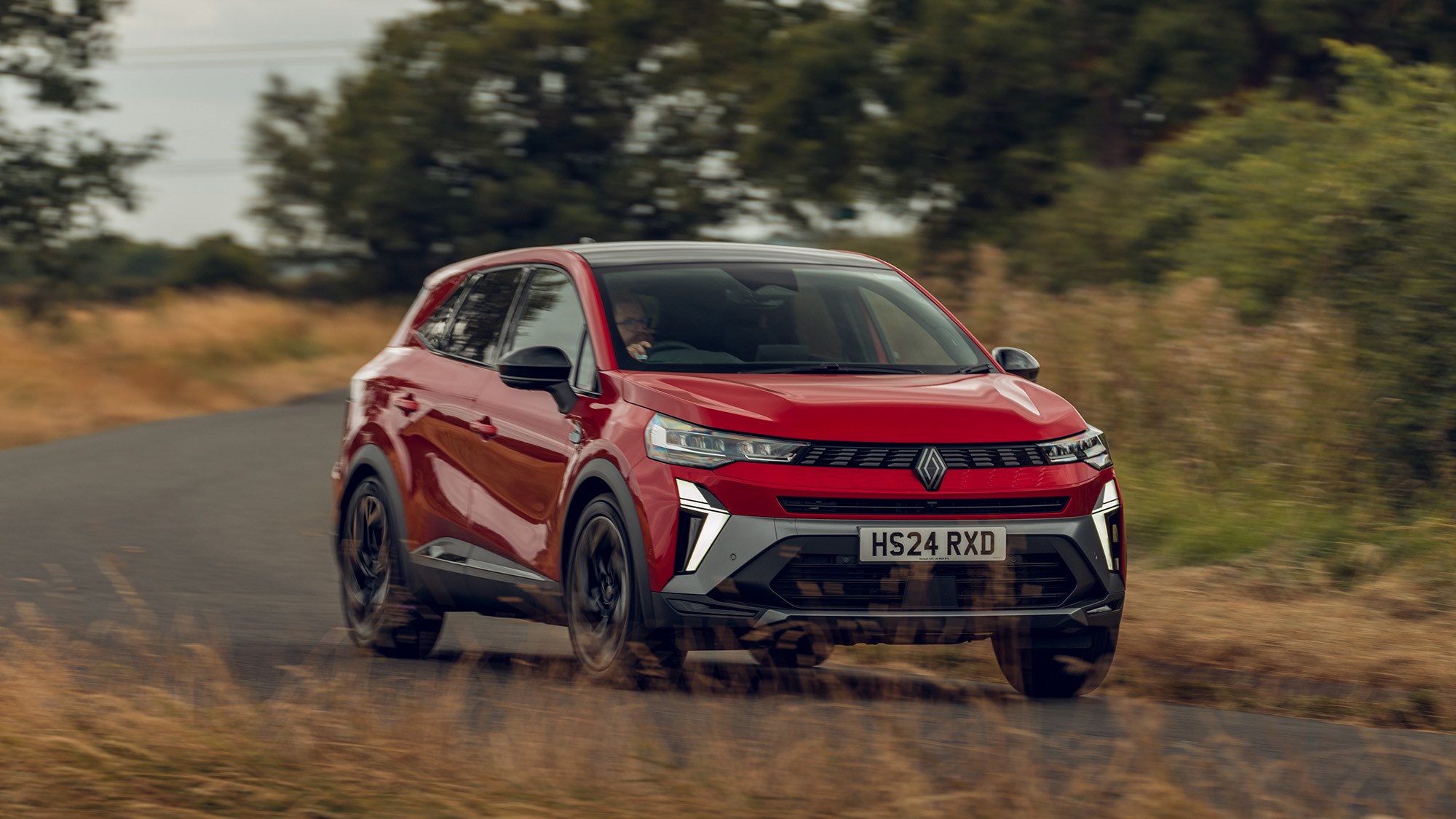
As for direct rivals raised outside of its own stable, Renault has lined up the Nissan Qashqai in its sights, while the Skoda Kamiq and Volkswagen Tiguan are also right up there in the mix. To find out how this latest Renault SUV fares, read on for the full review from CAR.
Every car we get our hands on goes through a rigorous testing process. Our highly experienced team will leave no stone unturned as they put the car through its paces, examining the way it drives, the interior and the price point to name a few criteria. To find out more, head over to our how we test cars page.
At a glance
Pros: Spacious inside, lots of tech as standard, competitively priced
Cons: Only one power unit currently available, can be a bit coarse, some interior bits flimsy
What’s new?
It’s a whole new car, but it’ll feel very familiar to owners of Renault’s recent crop. The Symbioz shares the same 145 hybrid engine with several other models in the manufacturer’s hybrid lineup, including the Clio, the Arkana, the Captur and the Austral. The interior is also largely the same as one would find in those other aforementioned cars, complete with a portrait infotainment display and baked in google services. Alpine trim options are available towards the top end of the range, resplendent in French tricolours and Alpine branding. Renault has a Formula One team, after all, and it doesn’t want you to forget that.
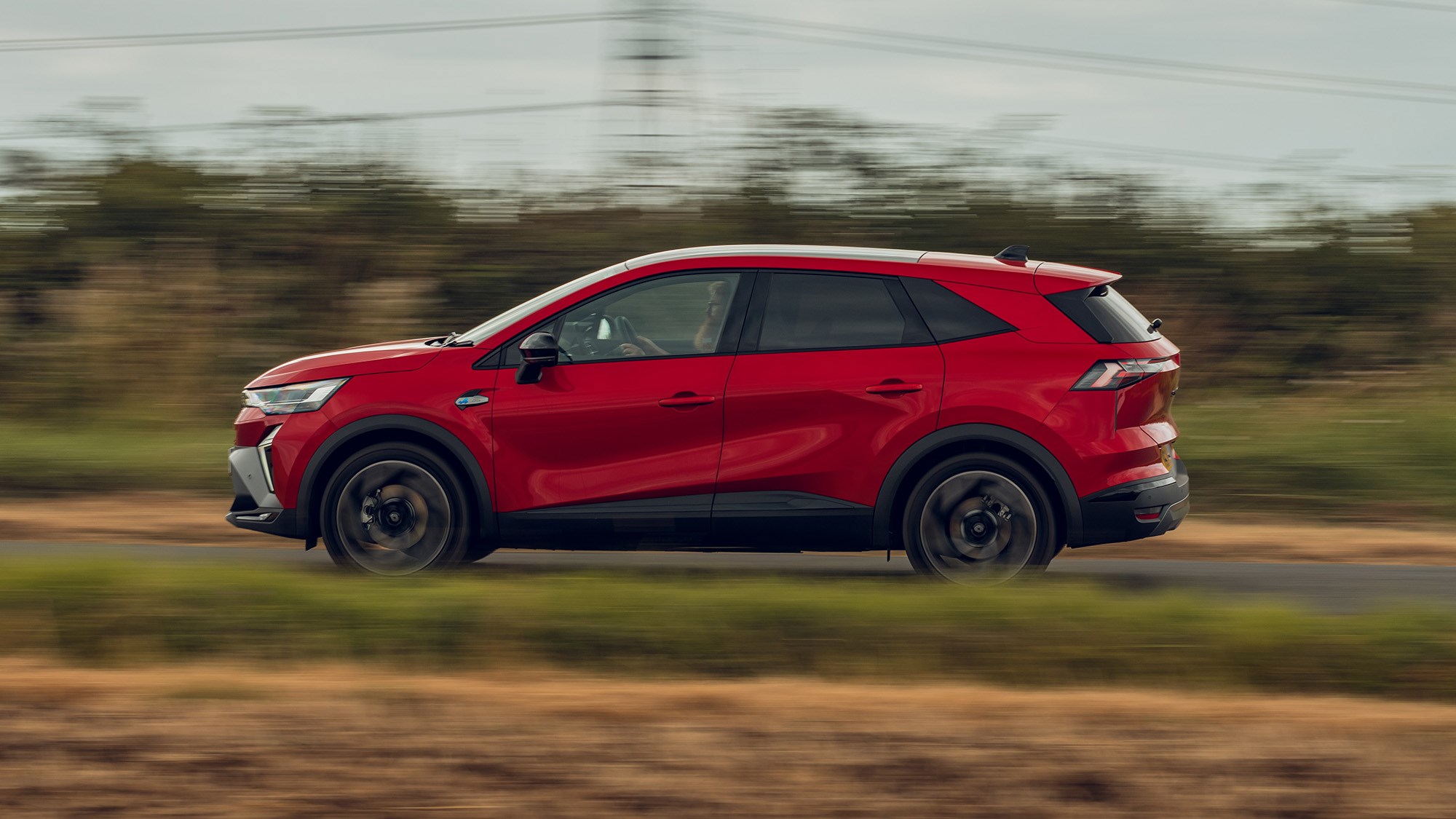
The Symbioz also comes fitted with Renault’s latest raft of safety systems and, rather fortunately, a button to turn a select few of them off in one go, depending on what you feel you need.
What’s the interior like?
Stepping into the Symbioz, it’s clear that this is a car primed for family life. Renault itself has outlined the lineage of the Symbioz as one of its ‘voitures à vivre’ (cars for living), tracing right the way back to the Renault 16 from the 1960s, followed by the Espace a couple of decades later.
The Iconic Esprit Alpine model that I tested was a range-topper, and so it came equipped with Renault’s opacifying sunroof as standard. It’s a neat party trick, being able to opacify and then clear again at the touch of a button, or even at the command of your voice thanks to Google assistance. With the Solarbay ‘open’, the cabin felt airy and commodious, even if three fully grown adults would struggle to fit comfortably on the back bench.

Speaking of the back bench, Renault has stuck it on a rail so it can slide forwards 16cm to maximise room in the boot. With the bench in the forward-most position and the seats up, the boot can hold up to 624 litres, which is pretty impressive for a mid-sized SUV. Moving the bench forward does, however, completely compromise back seat leg room, leaving it pretty much unusable for sitting on. The maximum boot capacity with the seats folded down becomes 1582 litres. Again, not bad at all.
As for the overall trim, the Symbioz blends a mixture of tough sturdiness and sporty flare rather well, in Iconic Esprit Alpine, at least. The seat fabrics and various other surfaces around the interior felt prepared for the worst, with a rugged springiness or a hard outer-layer to ward off family life wear. The dashboard, meanwhile, mixes hard plastics with softer, coloured fabrics and sleek polished steel. It doesn’t necessarily feel luxurious, but there’s certainly enough going on for it not to appear barren, or cut-rate.
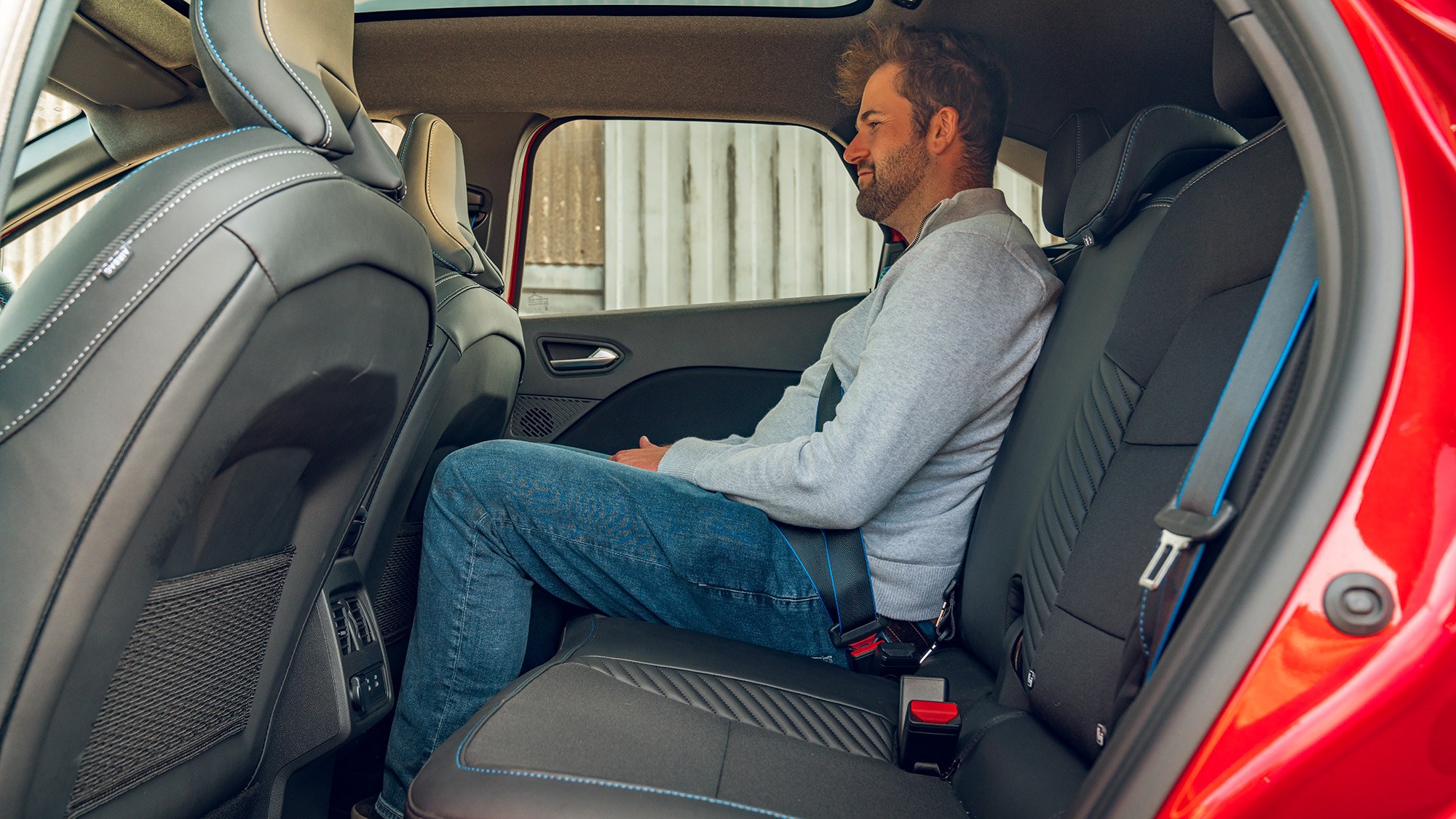
Thankfully, Renault has opted to keep a number of tactile buttons – or rockers, in this case – for a few of its functions around the dashboard, including those for the climate control and fan speed. It’s a welcome sight, given that so many manufacturers now house the controls to so many functions within the infotainment screen software. As for the Symbioz, though, they’re perpetually front and present – no faffing around with your eyes off the road at motorway speeds required.
The portrait-orientated 10.4-inch infotainment display may look like a knock-off ipad from a downtown Beijing Woolworths but the graphics are nonetheless crisp, clear and responsive to the touch. The baked-in Google software allowed me to access navigation services and even Spotify without having to connect my phone – helpful if you’re in a pinch, but I still loaded up CarPlay within a minute of getting in the driver’s seat. Sorry Renault…
What’s it like to drive?
I can report that the Symbioz drives like how you might imagine any decent hybrid family crossover SUV would: it’s compliant, comfortable and almost entirely inoffensive. I do however, still have a few gripes. Let’s get into them.
Around town, the car felt entirely at home. Its supple, supportive ride and absence of noise from the hybrid unit were conducive to a very relaxed experience. I could just potter along without fuss, and even over substantial potholes, the car invariably kept its poise and collection. The Symbioz doesn’t have the quickest steering rack, and it’s almost completely numb in feel, but the wheel is light enough to be turned with ease, and I highly doubt any owners will ever draw issue with the way it’s been set up.
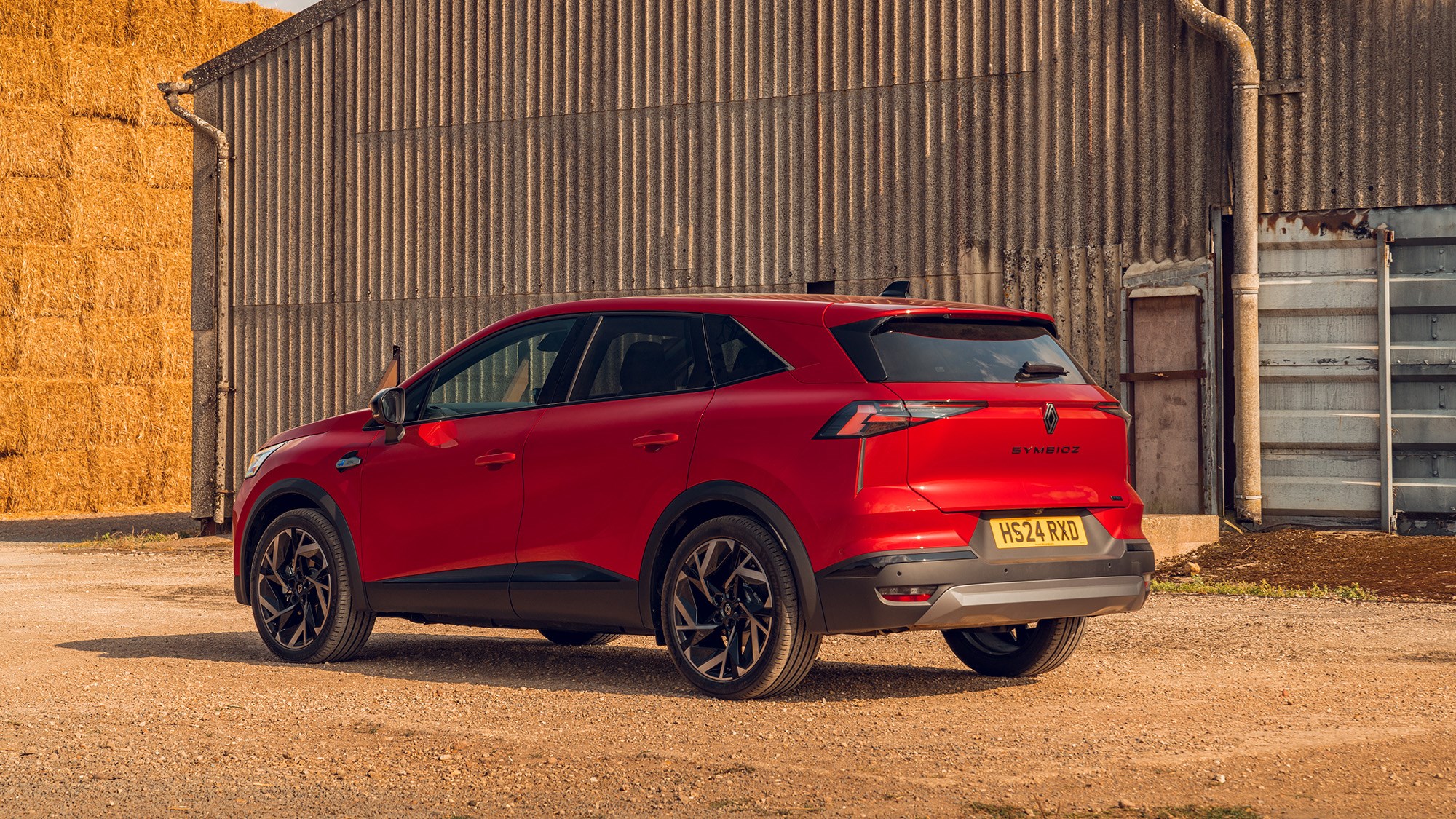
As for the power unit, in urban environments the 143bhp hybrid engine will happily carry out most of its work using electric power only. You can drive for miles at certain speeds without any real indication that a crank shaft is turning at all, but as soon as I put my foot down, the 1.6-litre ICE unit would come to life with a bit of a tortured growl.
Pulling onto the motorway would occasionally panic the engine into a bit of a frisson. It revved out with a coarse note, before finding the right gear about a second or two later than I really wanted. Once on the motorway at around 70mph, even relatively light nudges on the accelerator would send the engine howling again, as though it were preparing for a substantial demand in speed every time.
From my experience in the Symbioz, its automatic ‘box has the sort of delayed reactions of a CVT, holding onto gears for too long to support a general power deficiency. Again, at slow speeds it was never an issue, but I occasionally found myself wanting when it came to overtaking grunt or poke to exit slip roads. Will most Symbioz owners ever really care? Possibly not, but I still reckon the hybrid unit in the Hyundai Tucson offers a smoother power delivery.
Before you buy (trims and rivals)
The Symbioz range is split into three trims: Techno, Techno Esprit Alpine and Iconic Esprit Alpine. Techno, at the bottom of the range, starts from £29,295, and for that you get 18” alloys, Renault’s 10.25” digital driver display, adaptive cruise control and wireless charging to name just a few features. Next up the list, the Techno Esprit Alpine grade for £31,295.
It features a smattering of Alpine logos around the cabin, along with heated front seats and 19” Alpine ‘elixir’ alloy wheels. This trim also packs in extra driving aids and safety systems like lane-centring assist in the cruise control software and blind spot warnings.
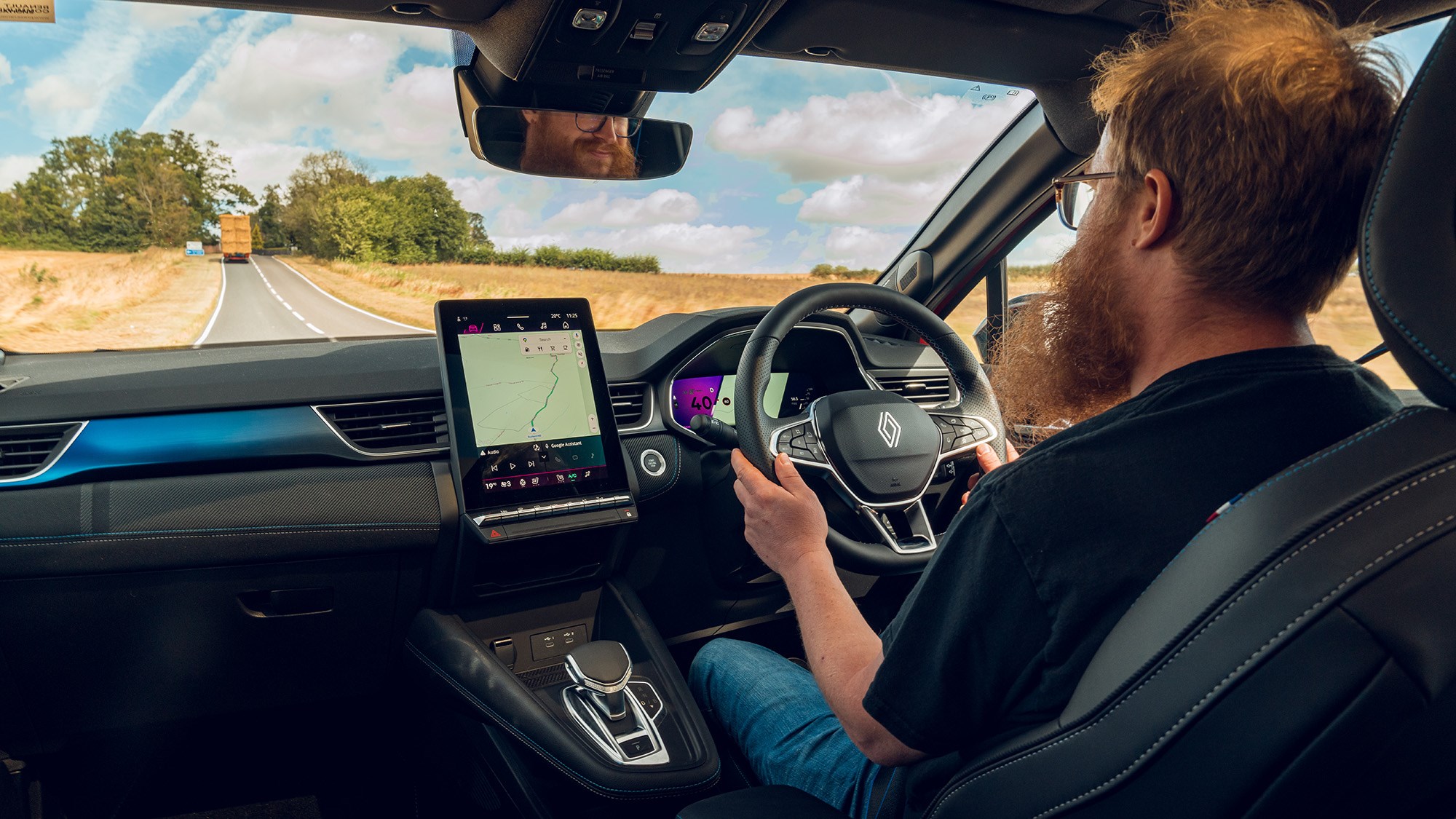
Topping off the available lineup, Iconic Esprit Alpine packs in all of the above, plus a Harman Kardon premium audio system, a 360deg parking camera, hands-free parking and the Solarbay sunroof. From my experience of jumping between a couple of the grades, even the lower-level trims feel well-equipped.
Renault won’t let you cross-spec extras from different trims, so you can’t ask for your Techno car with a Solarbay, for example. The opacifying sunroof serves well to open up the car, but if you aren’t too fussed about space and light, nor of the extra sporty Alpine touches of the top-two options, I think you’d be perfectly happy with a Techno car.
But how does it stack up against other rivals? Renault compares the Techno Esprit Alpine Symbioz with latest N-Conncta Nissan Qashqai, the Toyota CH-R and Kia Niro. Over these rivals, the Symbioz is cheaper, offers the second-highest amount of power (the Qashqai tops it with 155bhp) and includes electric height adjustment for the front two seats, which none of the other three do.
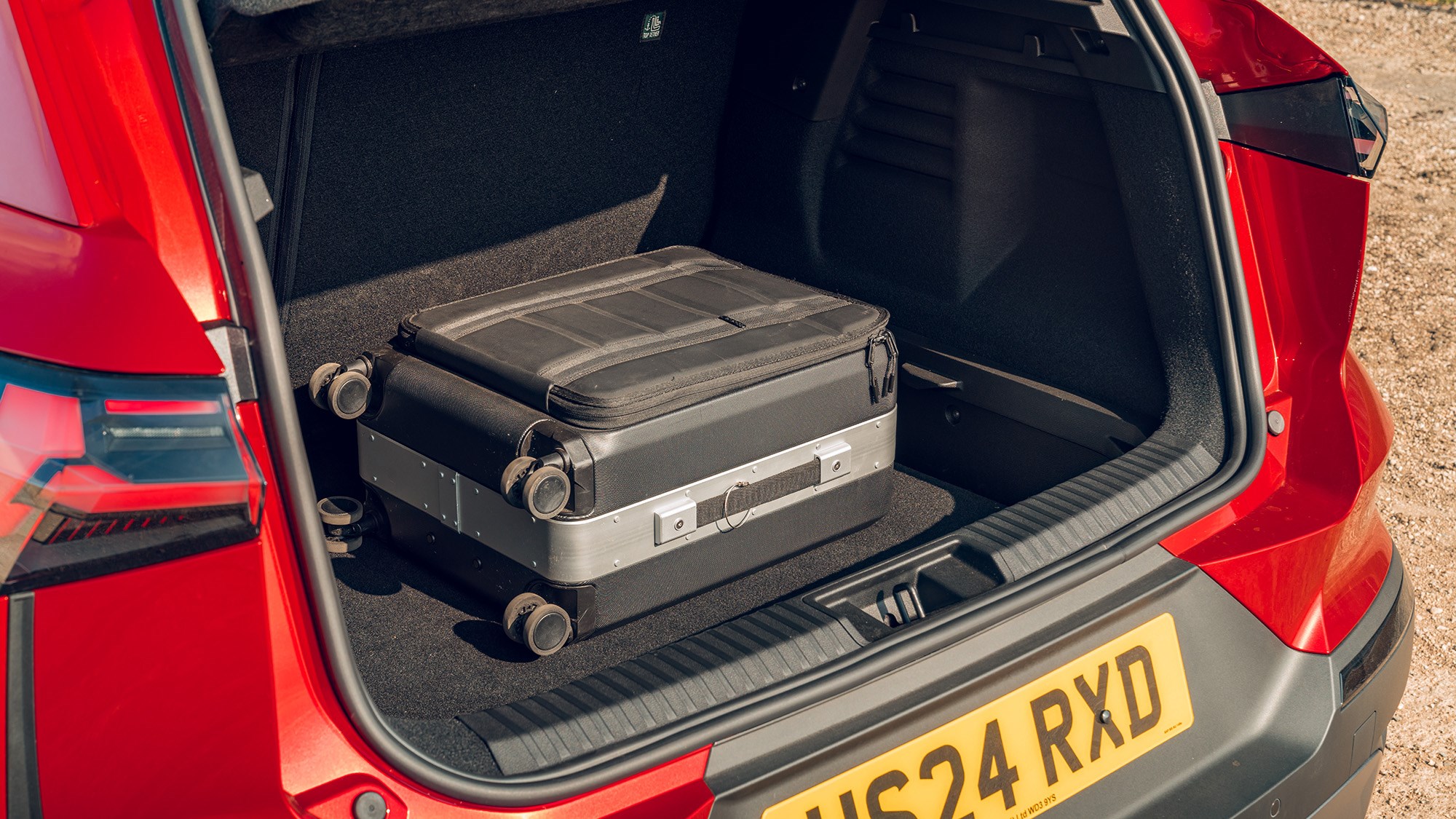
The Kia does, however, offer a better quoted MPG figure of 61.4 – 60.1 in the Renault – while both the Toyota and the Nissan have larger infotainment touch screens at 12.3” a piece.
Verdict
The Symbioz is a decent car, I have no doubts of that. It’s comfortable, efficient and incredibly easy to drive, while well-enough equipped so as not to feel cut-rate, despite the low price tag. I think there are probably more stylish options on the market, but for the purposes of hauling families around, I reckon the Symbioz is up there with the best. Only trouble is the rest of the Renault line-up… Why go for the Symbioz when the bigger and more luxurious Austral exists just up ahead? If I had the extra cash, I think I’d still opt for the roomier car.